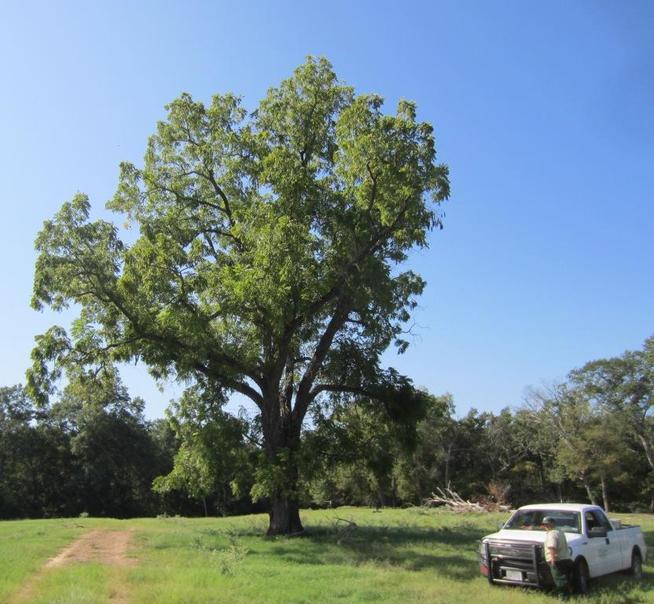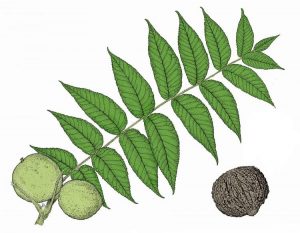Unique Trees of North Texas:
Black Walnut
(Juglans nigra)
By Jeremy Priest
The next tree in our unique tree series is native from South Dakota to Florida and follows the eastern edge of the Cross Timber region to Central Texas. Black walnut (Juglans nigra) has been a prized tree for historic farmland and ranches. This is due in part to valuable walnuts and characteristic heartwood of the tree, but also for it’s indication of soil quality. Black walnut is typically found on deep, rich soils and the wood of this tree is hardy and has beautiful, highly valued grain. The large walnuts produced by this species are difficult to extract, but highly rewarding.
Black walnut is most likely be confused with pecan as it is in the same family and may occur in similar sites. It’s plantation usage was not nearly as popular as pecan in North Texas, but individuals can sometimes be found near old pecan plantations. Black walnut can be distinguished as it contains more leaflets than pecan and the leaf is larger: 12-24 inches long. Chinese pistache has similar leaves, although the leaflets on pistache have smooth margins while black walnut typically has fine serration. This species is most quickly identified by it’s fruit. Walnuts appear dark brown and furrowed after the outer layer is removed, but are covered by a thick, green husk with almost sandpaper like texture when they are immature on the tree. As the fruit matures, the outer husk changes color to nearly black and the husk is absorbed into surrounding soil. Black walnut is an allelopath, which means that it produces chemicals toxic to most other plants. This natural herbicide is concentrated in the husk surrounding the walnut and helps reduce competition for the young seedling. The toxin is not strong enough to harm most trees, but could impact sensitive garden plants and some conifers, especially under a fully mature tree. For more information on juglone toxicity click here.
As evidenced by the naturally allelopathic seeds, black walnut needs full sun when young, and the tree also requires adequate water in well-drained soil. Although the native black walnut prefers a lower pH than typically found in the cross timbers (< 7.5), Texas A&M produces a Texas variety of little walnut (Juglans microcarpa) which is better suited to high pH soils. Black walnut can be somewhat slow growing, except when planted in ideal conditions. Black walnut is similar to post oak in that it produces deep roots and is not easily transplanted; however, the demand for black walnut seedlings is high enough that nurseries do produce seedlings available to the public, mostly in bare root form.
The state champion black walnut in Bowie County (Northeast Texas) is 56 inches in diameter and 80 feet tall with 177 feet of spread. Extremely large black walnut are possible in North Central Texas as one Dallas County specimen is 65 feet tall with a 69 foot spread. However, most individuals could be expected to reach 40 feet in height and 30-45 feet in width. Trees mature quickly and nut production can begin as early as 6 years, although large crops are not likely until trees are around 20 years old.



